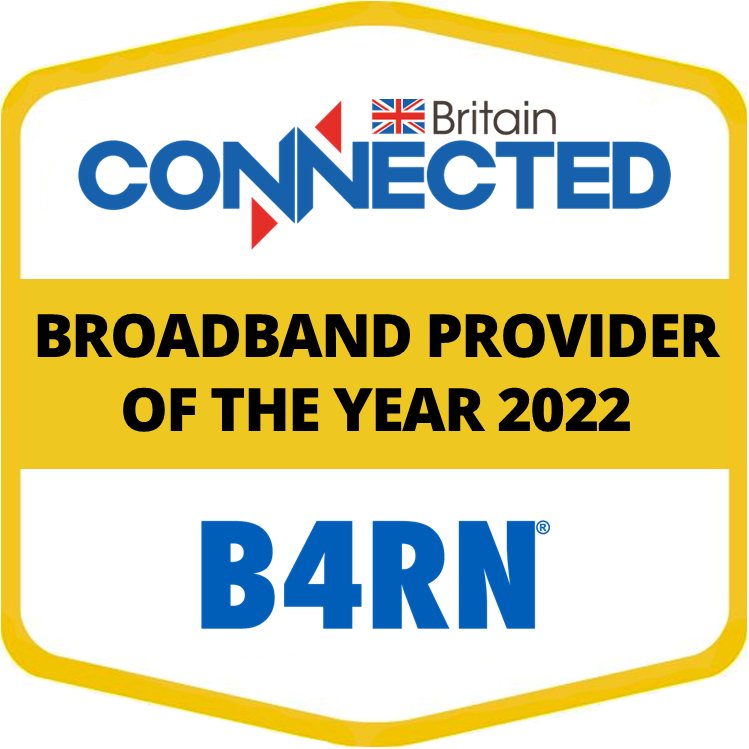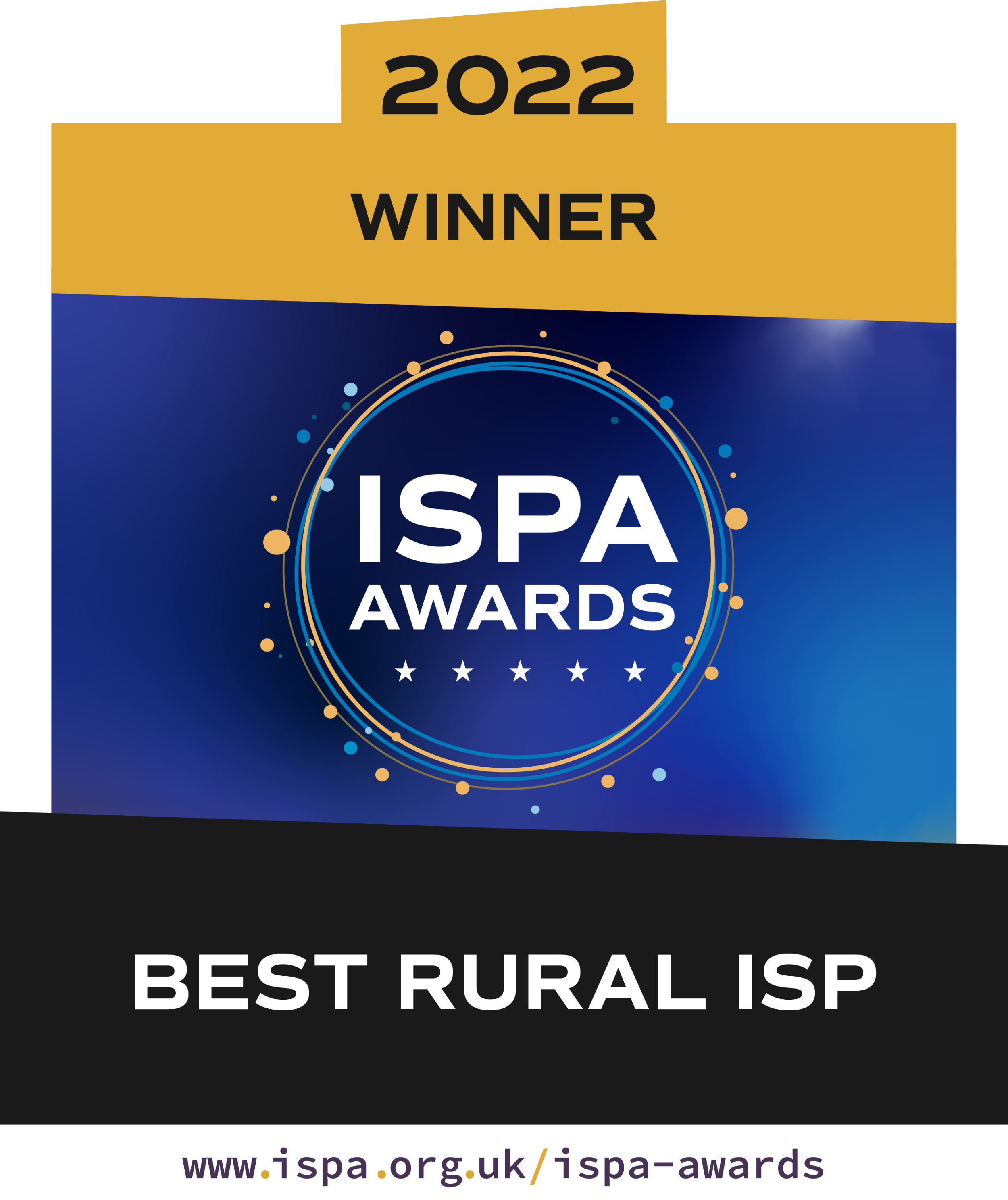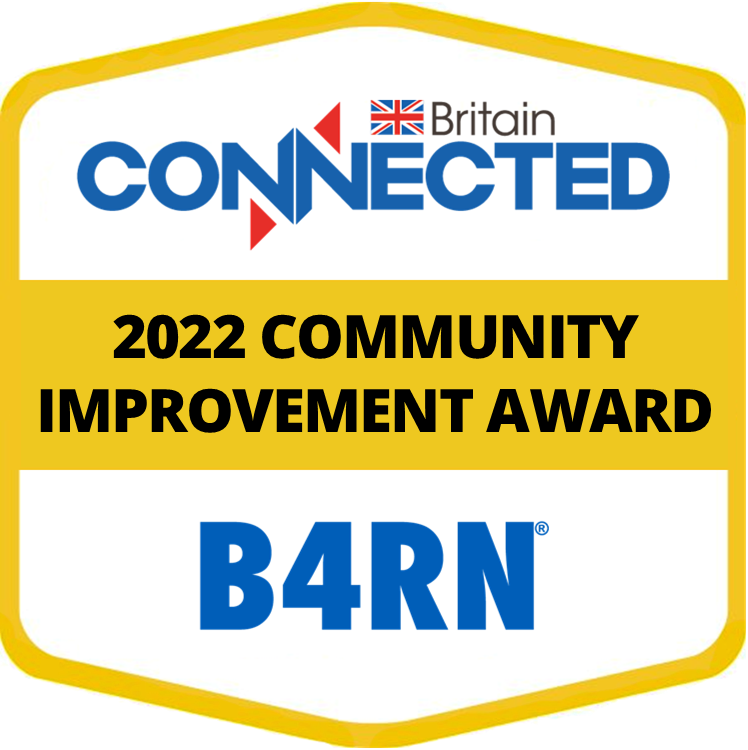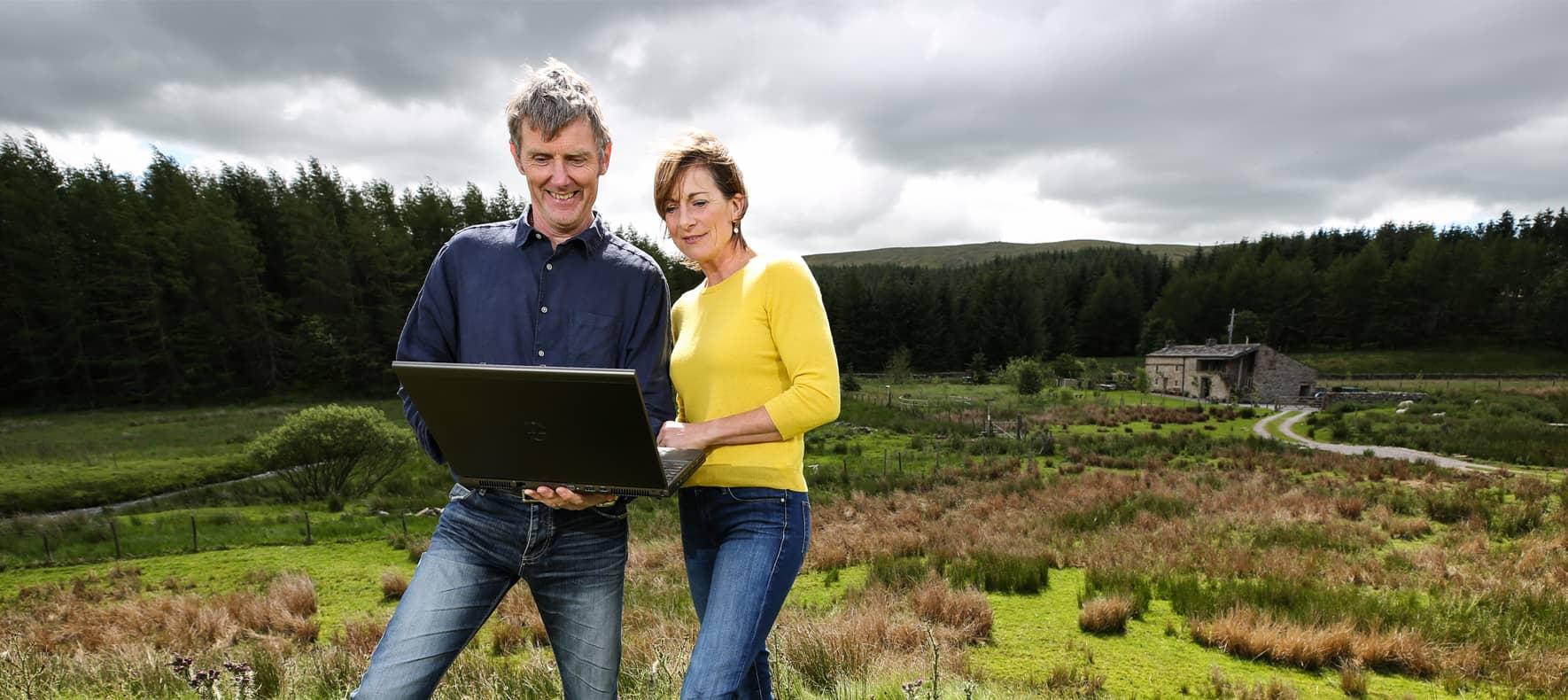Broadband for the Rural North Ltd (B4RN) – IP31352R Background information
April 7th, 2017
Author: T Rigg
Posted In: Uncategorized
The B4RN project was started in early 2011 with the aim of providing high speed FTTH service to a small number of rural parishes in north Lancashire. These were all areas with very poor broadband service and little likelihood that this would be fixed in a reasonable time frame.
The network design was based on the assumption that we could lay narrow bore duct across private farmland with the owners granting free wayleaves and assisting with the work. If that was achievable then the costs of the build could be reduced sufficiently to make the rollout economically viable. Once fibre was installed all the way to the home we could deliver 1Gbs symmetrical broadband from day one with the option to increase speeds as needed, a truly future proof network.
On the 11th August 2011 B4RN was registered under the Industrial and Provident Society Act 1965 using rules making clear that the company would be operated for the benefit of the community and would be a non-profit organisation. This model was adopted so that the community could see very clearly that the project was aimed at supporting the community and that no one would make any profit from it. Any surplus income would have to be returned to the community. On that basis we expected the vast majority of land owners to agree to grant free wayleaves and support the project.
In December 2011 we launched the project formally with a business plan and an invitation to invest in shares to raise the money needed to fund the build. We pre-registered the shares issue with HMRC to ensure that investments would comply with the Enterprise Investment Scheme (EIS) allowing tax payers to reclaim 30% of the investment from their income tax. We also offered additional incentives by way of waiving the connection fee of £150 for those investing £1500 or more. Also at that time investments of £1500 or more would benefit from a year’s free service worth another £360. To encourage early investment we increased the free period to 15 months for those investing before 28th Feb 2012. (This free service element was stopped for investments in 2013 to reflect the deceasing risk profile of the project. The free connection incentive has however still been kept.)
In March 2012 we reviewed the investment take up and as it had reached over £350K, well in excess of the base level of £250K which we had set as the trigger point, we began the project.
First digging started in the summer of 2012 and the first connections followed in October and continued slowly through the 2012/2013 year reaching 56 by 31st March 2013. From then on we have grown steadily adding ever more properties and expanding our footprint.
In 2015 we moved to our new premises in Melling. We have also grown to 14 full time and part time staff and this is planned to increase to 24 in the near future. The combination of the new premises, our increased staff levels and the continued support of a large number of volunteers has raised our connection rate to around 125 per month and this is still climbing. At the time of writing we have 2850 properties connected and are aiming to reach 5000 by the end of the 17/18 financial year.
Investment in B4RN has grown steadily with a little over £3M of shares from 1360 investors and £2.3M of loans made to the company. Our model is now based on each new parish wishing to join B4RN being called on to raise the funding needed to complete that parish. This is working well and we have over 63 parishes in our footprint in various stages of build from completed through to advanced planning. There is an enormous latent demand for FTTH in the rural areas and not a week passes without our being approached by at least one new area asking how they can join.
In 2017 we have also made a substantial investment in upgrading our core network. We have leased a fibre pair from Manchester to Edinburgh, 480Km, and established a new external facing node at Edinburgh to complement the one at Manchester. This ensures that a fibre break in the core network will not take down our service. We have installed DWDM equipment on the fibre to enable us to provide 400Gbs of capacity in each direction and this could be increased in the future to 4Tbs if needed. So we are well positioned to add a large number of connections to our network without needing another core upgrade for the foreseeable future. We can also be confident about the robustness of the service we offer.
As you would expect our revenue has climbed steadily since the 2012-13 financial year when we had just 56 connected customers. In the 16/17 financial year we generated over £750K of income from connections and service, in 2017/18 we expect to exceed £1.5M. In 2017/18 we will pass the point where our income fully covers our operating costs. With our new core network in place and the staffing sorted we should be able to expand for a long time without significant increases in our OPEX so our free cash flow will grow quite rapidly. We are still on course to return all investments made within 10 years.
There are also a large number of opportunities open to B4RN which we need to consider. For instance the new network from Manchester to Edinburgh (via Glasgow where we also have a node) and our links to London offer us the option of selling spare capacity to third parties. We can also offer point to point services within our footprint and between/to our core nodes to businesses requiring it. This would be outside of our FTTH service and an additional revenue source. We are also being approached by many areas of the UK wanting us to start offering services in their patch. So far we have resisted this and concentrated on organic growth adding adjoining areas only. However with the national network taking shape and our ability to take new fibre circuits from a number of suppliers, including dark fibre from Open Reach later this year, we could begin adding remote areas to our network. We need to explore alternative methods of expanding our model to communities elsewhere.
Customer Testimonial
We’re award winners!















